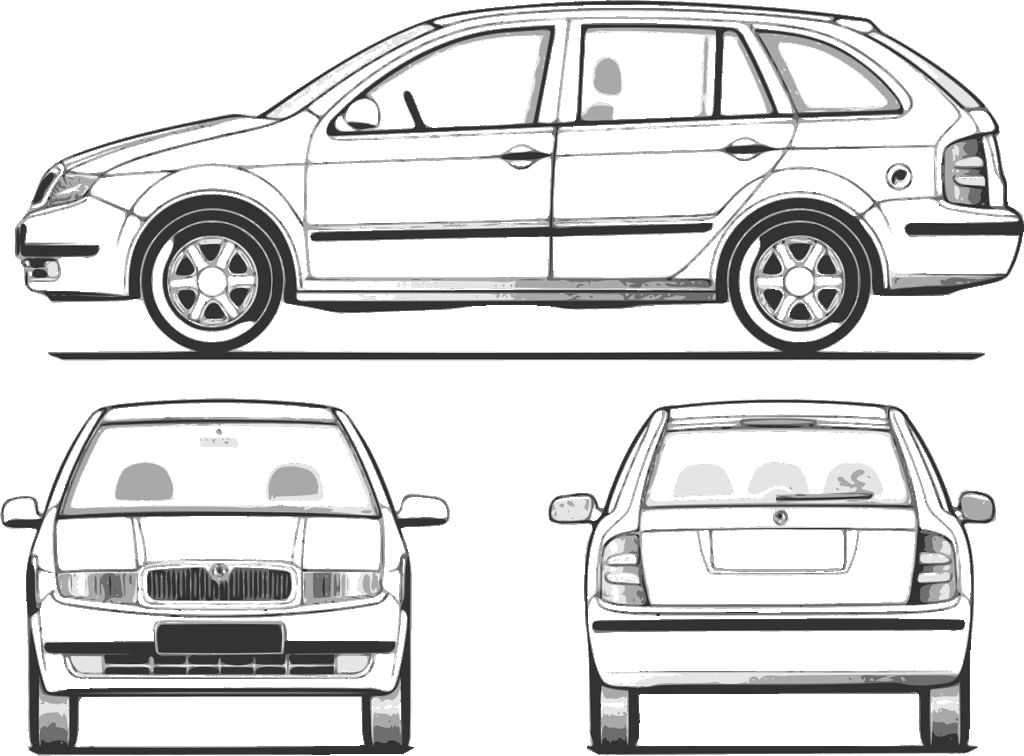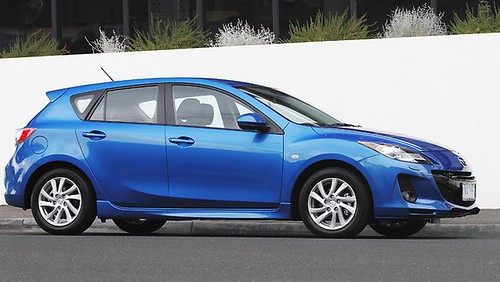
The automotive industry is undergoing a profound transformation, where traditional metrics like horsepower and fuel efficiency are increasingly augmented by the power of software. As electric vehicles (EVs) become the norm, a car’s value is no longer static at purchase; it’s defined by its ability to evolve and improve long after it leaves the dealership. This paradigm shift centers on one crucial capability: over-the-air (OTA) updates, which enable vehicles to get smarter, safer, and more feature-rich over time.
OTA updates allow manufacturers to push new features, fix bugs, enhance performance, and bolster safety protocols, all without a service center visit. This function is pivotal in shaping customer perception in a market valuing flexibility and innovation. Not all automakers embrace this digital revolution equally. While some engineer vehicles for OTA from the ground up, others rely on legacy patch systems, leading to a divide between continuously improving vehicles and those frozen in their original software state. In this analysis, we highlight four electric vehicles that truly benefit from robust and reliable OTA systems, setting a benchmark for modern ownership.
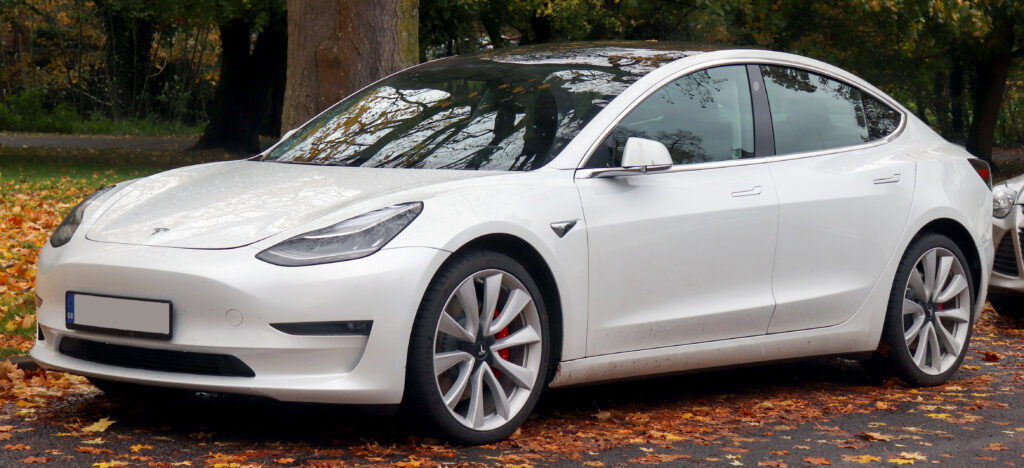
1. **Tesla Model 3**The Tesla Model 3 is the benchmark for OTA update excellence, engineered with a digital-first mindset from its inception. Every software-governed component was designed for remote accessibility. Tesla’s proprietary software platform manages everything from battery management and performance metrics to entertainment systems and seat heaters. This deeply integrated system allows for expansive and meaningful changes through software alone, often rolling out groundbreaking features that reshape how the car operates day-to-day.
What truly distinguishes Tesla is the frequency and ambition of these updates. Instead of quarterly cycles, Tesla pushes updates whenever ready, sometimes multiple times a month. Owners have received enhancements like increased driving range, better energy efficiency, added driving visualizations, full self-driving beta improvements, gaming integrations, and robust safety alerts. Many of these non-superficial upgrades change how the car behaves, making it feel actively improved even years into ownership, a routine sensation with Tesla.
A major advantage is Tesla’s uniform platform across its vehicle lineup. Unlike legacy automakers piecing together hardware and software from various suppliers, Tesla builds almost everything in-house using a centralized system. This reduces fragmentation and ensures updates deploy simultaneously and consistently across large portions of the fleet. Owners don’t worry about compatibility; the rollout is smooth and inclusive, contributing to high customer satisfaction with Tesla updates.
Tesla leverages its OTA system as a customer engagement strategy. Patch notes are clear, well-documented, and available in the vehicle’s infotainment screen, with the app sending notifications about pending updates. Installations are painless, and users can schedule updates overnight or during preferred downtime. This system fosters control and confidence for software-focused drivers, reinforcing a feeling of being part of an evolving ecosystem, not just owning a static machine.
Car Model Information: 2025 Genesis GV80 3.5T
Name: Tesla Model 3
Manufacturer: Tesla, Inc.
Production: 2017–present
Assembly: unbulleted list
Designer: Franz von Holzhausen
Class: Mid-size car
BodyStyle: Sedan (car)
Layout: unbulleted list
Related: Tesla Model Y
Motor: unbulleted list
Transmission: Single-speed fixed (9:1 ratio)
Battery: unbulleted list
ElectricRange: unbulleted list
Charging: unbulleted list
Wheelbase: cvt
Length: unbulleted list
Width: cvt
Height: unbulleted list
Weight: cvt
Caption: 2019 Tesla Model 3 Performance
Categories: 2020s cars, ANCAP large family cars, All-wheel-drive vehicles, All Wikipedia articles in need of updating, All Wikipedia articles written in American English
Summary: The Tesla Model 3 is a battery electric powered mid-size sedan with a fastback body style built by Tesla, Inc., introduced in 2017. The vehicle is marketed as being more affordable to more people than previous models made by Tesla. The Model 3 was the world’s top-selling plug-in electric car for three years, from 2018 to 2020, before the Tesla Model Y, a crossover SUV based on the Model 3 chassis, took the top spot. In June 2021, the Model 3 became the first electric car to pass global sales of 1 million.
A facelifted Model 3 with revamped interior and exterior styling was introduced in late 2023 for countries supplied by Gigafactory Shanghai and in early 2024 in North America and other countries supplied by the Tesla Fremont Factory.
Get more information about: Tesla Model 3
Buying a high-performing used car >>>
Brand: Tesla Model: Model 3
Price: $63,683 Mileage: 5,413 mi.
Read more about: From ‘Terminator’ Fears to Copyright Battles: 12 Celebrities Sound Off on the AI Revolution
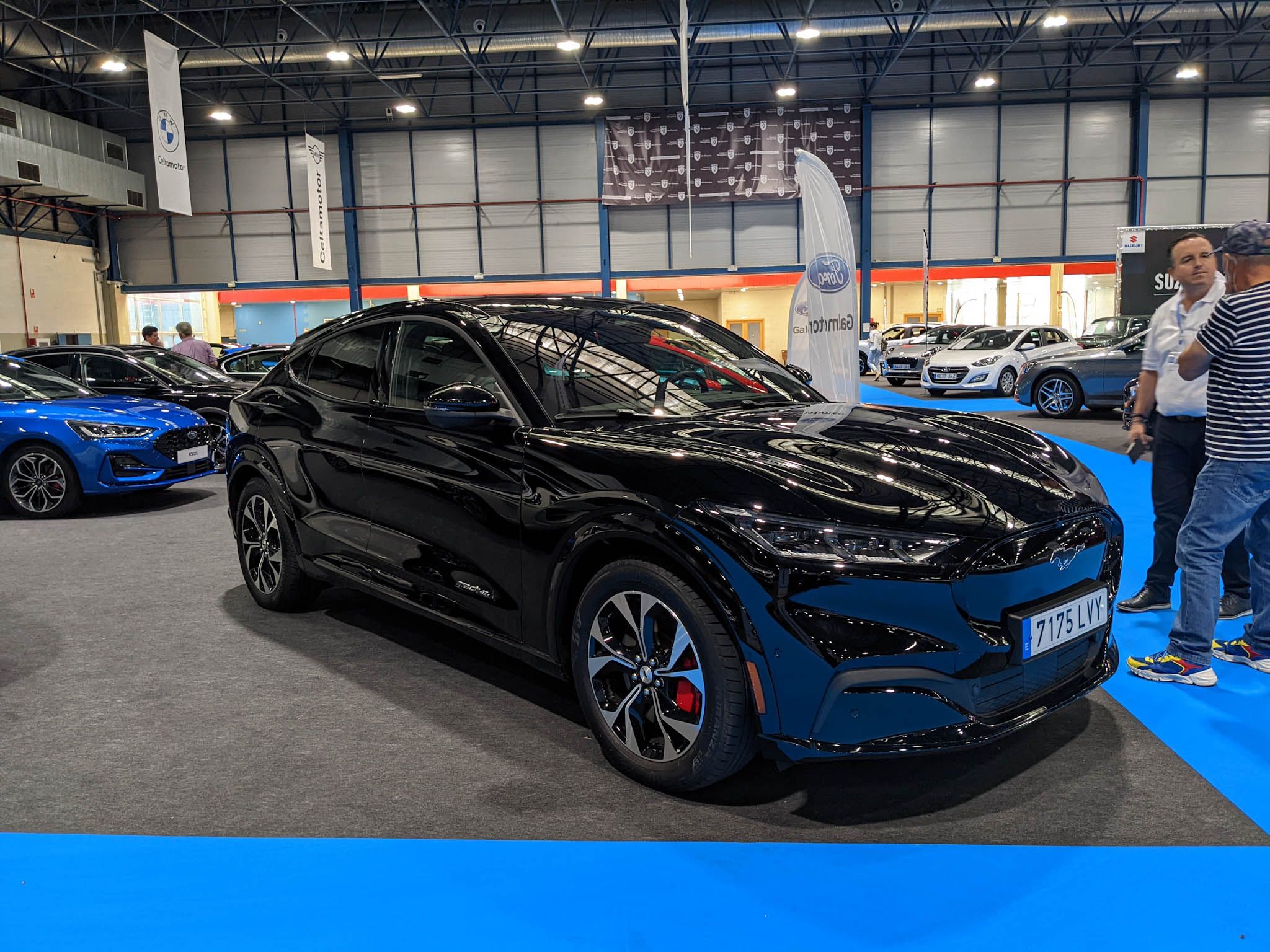
2. **Ford Mustang Mach-E**The Ford Mustang Mach-E marks a significant turning point in the traditional auto industry’s digital vehicle management. Ford, known for sturdy trucks and gas-powered vehicles, surprised many by releasing a software-rich, OTA-capable EV. Their “Power-Up” OTA framework is competent and ambitious, representing Ford’s willingness to reshape itself for connected vehicles. It offers customers a continuous improvement model previously uncharacteristic of legacy automakers.
Since launch, the Mach-E has received a steady stream of updates beyond basic bug fixes. Ford delivered real functionality improvements, extending range through battery management, enhancing adaptive cruise control, and integrating more voice command features. Even the BlueCruise hands-free driving system is deployed via OTA. These upgrades influence driving confidence and daily convenience, reassuring owners that their vehicle is on a path of digital enhancement.
One standout achievement is the refinement of interface usability. Ford has shown a willingness to respond to user complaints and feedback. Updates smoothed responsiveness in the SYNC 4 infotainment system, improved smartphone pairing, and added Amazon Alexa integration. These quality-of-life changes signal Ford is listening, iterating, and adjusting as the vehicle matures, rewriting the script for traditional automakers.
The Mach-E’s success in OTA delivery has broader implications. It demonstrates that a company doesn’t have to be a tech startup to offer meaningful software updates. With proper planning, investment, and customer transparency, even a 100-year-old automaker can transition into the future. Ford is showing that modernization is achievable at scale, with the Mustang Mach-E leading that charge.
Car Model Information: 2025 Genesis GV80 3.5T
Name: Ford Mustang Mach-E
Manufacturer: Ford Motor Company
Production: 2021–present
ModelYears: 2021–present
Assembly: Unbulleted list
Designer: Unbulleted list
Class: Compact crossover SUV
BodyStyle: coupe SUV
Layout: Unbulleted list
Platform: Ford Global Electrified 1 platform
Motor: Synchronous motor#Permanent-magnet
Wheelbase: Convert
Length: Convert
Width: Convert
Height: Convert
Weight: Convert
ElectricRange: Convert
Battery: 68–98 kWh
Charging: unbulleted list
Powerout: Convert
Sp: us
ModelCode: CX727
Categories: 2020s cars, All-wheel-drive vehicles, All Wikipedia articles written in American English, All articles needing additional references, Articles needing additional references from January 2023
Summary: The Ford Mustang Mach-E is a battery electric compact crossover SUV produced by Ford. Introduced on November 17, 2019, it went on sale in December 2020 as a 2021 model. The Mach-E is part of the Mustang series, with its name inspired by the Mach 1 variant of the first-generation Mustang. The car won the 2021 North American SUV of the Year Award.
Get more information about: Ford Mustang Mach-E
Buying a high-performing used car >>>
Brand: Ford Model: Mustang Mach-E
Price: $63,683 Mileage: 5,413 mi.
Read more about: The Road Ahead: Ranking 12 Convertibles Built to Endure 180,000 Kilometers of Open-Air Thrills
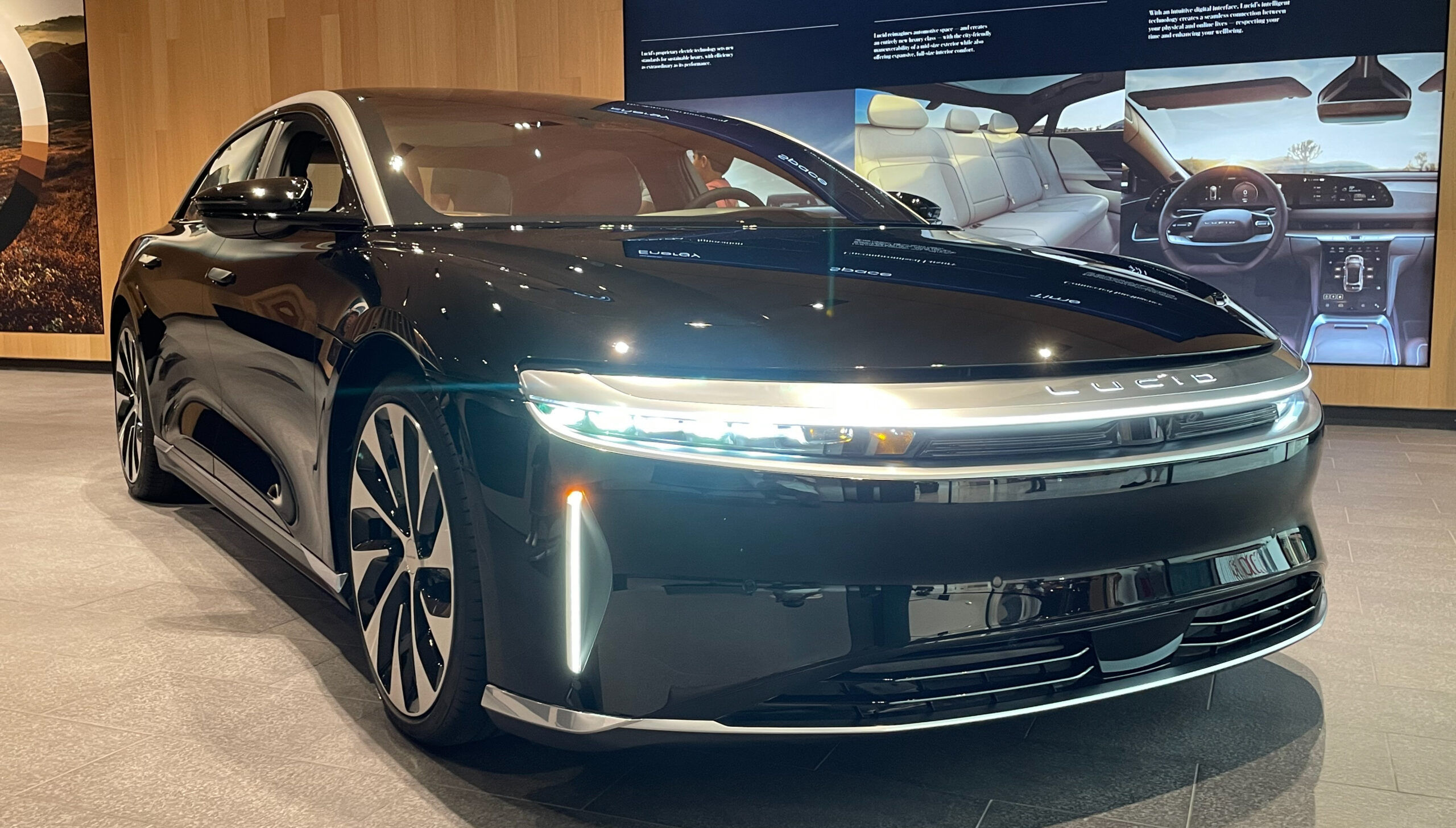
3. **Lucid Air**Lucid Motors made a bold entry into the luxury EV space with the Lucid Air, positioning its software capabilities as a central pillar of its identity. Lucid designed the vehicle’s electrical backbone for broad OTA compatibility from the start. This planning allows the Air to receive deep-level updates across nearly every subsystem, including core driving logic, battery optimization, and infotainment performance. The software-first mindset is evident in the vehicle’s responsiveness and its consistent update cadence.
Lucid’s OTA update platform operates on a high-bandwidth, high-frequency infrastructure for rapid deployment. Updates have been substantive and well-documented, covering everything from camera recalibration for driver-assist features to improved mapping accuracy. Even the feel of the accelerator pedal and regenerative braking levels can be modified via software. Lucid’s commitment to making its cars smarter and more refined every few months sets a high bar for luxury EV software ecosystems.
A vital element distinguishing Lucid’s OTA strategy is communication. Each update comes with detailed release notes, accessible via the app and in the vehicle. These notes explain not just what changed, but why, and what users should expect. This builds strong trust between brand and driver, crucial for a new automaker establishing itself in the premium space, as transparency builds loyalty.
Lucid’s user interface is also built to evolve, allowing customization and redesigns through updates. Graphics improve, controls are added, and usability enhancements are regularly introduced. In the luxury market, this dynamic experience is important; customers expect perfection and improvements without hassle. The Lucid Air, blending rich updates with elite engineering, delivers a technology platform that adapts, learns, and gets better over time.
Car Model Information: 2022 Lucid Air Grand Touring
Name: Lucid Air
Caption: 2022 Lucid Air Grand Touring in Zenith Red
Manufacturer: Lucid Motors
Production: September 2021 – present
ModelYears: 2022–present
Assembly: Casa Grande, Arizona
Designer: Derek Jenkins
Class: Executive car
BodyStyle: Sedan (automobile)
Layout: unbulleted list
Related: Lucid Gravity
Transmission: One-speed fixed gear
Powerout: cvt
Battery: kWh,Lithium-ion battery
ElectricRange: cvt
Charging: unbulleted list
Wheelbase: 2960 mm
Order: flip
Abbr: on
Length: 4975 mm
Width: 1939 mm
Height: 1410 mm
Weight: convert
Sp: us
Categories: All-wheel-drive vehicles, All Wikipedia articles written in American English, All articles containing potentially dated statements, All articles with unsourced statements, Articles containing potentially dated statements from 2021
Summary: The Lucid Air is a battery electric four-door luxury sedan made by Lucid Motors. The car was announced in December 2016 and sold starting in 2021.
The Dream Edition’s EPA range is estimated at 520 miles (840 km), the longest on the market as of 2024. The production model was unveiled in September 2020, and production began in late 2021.
In November 2020, the Lucid Air Pure was announced with 406 miles (653 km) of projected range and 480 horsepower (360 kW) and a starting price of US$77,400. The range of trim levels includes Pure, Touring, Grand Touring, and Dream Edition.
On September 28, 2021, Lucid Motors announced that production had begun, with the base Pure model expected in late 2022. Deliveries commenced on October 30, 2021, with the first reservation holders taking delivery of Air Dream Editions in an event in California.
Get more information about: Lucid Air
Buying a high-performing used car >>>
Brand: Lucid Model: Air
Price: $63,990 Mileage: 17,499 mi.
Read more about: Stephen: 14 Mind-Blowing Revelations About a Name That Shaped History

4. **Rivian R1T and R1S**Rivian’s R1T pickup and R1S SUV embody a new breed of vehicle treating software as a cornerstone of the ownership experience. Rivian understood its target audience of outdoor enthusiasts and tech-savvy buyers would demand an evolving digital platform. To meet this, Rivian built its own in-house OTA infrastructure, capable of delivering updates spanning nearly every vehicle system. The system is fast, secure, flexible, and consistently used to push meaningful updates.
One impressive aspect of Rivian’s OTA model is its commitment to functional upgrades. Early adopters have seen updates significantly improving charging behavior, refining ride quality through adaptive suspension tweaks, and adding new off-road drive modes. These aren’t minor bug fixes; they directly affect real-world performance. Rivian has even released updates to reduce phantom battery drain, crucial for keeping vehicles competitive as hardware ages.
Another strong point is Rivian’s approach to community engagement. The company uses its app and digital platforms to communicate regularly with owners about upcoming updates. Forums and social media are part of their feedback loop, giving users a voice in how the vehicles evolve. When an update drops, owners feel included, fostering a two-way relationship crucial for brand loyalty in a market where listening and adapting are key.
While some automakers have embraced the future with advanced OTA systems, a significant portion of the market, particularly traditional players, still grapples with legacy infrastructure. These vehicles, despite their initial promise or established brand loyalty, often suffer from outdated patch systems that hinder long-term value, frustrate drivers, and limit the manufacturer’s ability to adapt to the fast-paced digital automotive landscape. This section examines five electric vehicles that exemplify these challenges, offering a critical look at how inconsistent software support impacts the ownership experience.
Car Model Information: 2025 Genesis GV80 3.5T
Name: Rivian R1T
Manufacturer: Rivian
Production: 2021–present
ModelYears: 2022–present
Assembly: Rivian Automotive,LLC
Designer: Jeff Hammoud
Class: Mid-size car,luxury car,pickup truck
BodyStyle: crew cab
Layout: unbulleted list
Related: Rivian R1S
Motor: Alternating current,Permanent magnet motor
Transmission: Single-speed
Battery: kWh,lithium-ion battery
ElectricRange: unbulleted list
Abbr: on
Charging: unbulleted list
Wheelbase: 135.9 in
Length: 217.1 in
Width: 81.8 in
Height: 75.7 in
Weight: cvt
Sp: us
Powerout: unbulleted list
Chassis: Body-on-frame
Categories: All Wikipedia articles written in American English, All articles with vague or ambiguous time, Articles with short description, Commons category link is on Wikidata, Electric trucks
Summary: The Rivian R1T is a battery electric mid-size light duty luxury pickup truck produced by the American company Rivian. The first production R1T was manufactured in Illinois on September 28, 2021, and was delivered to a customer. The official EPA range for the Rivian R1T (MY 2022–2024) ranges from 255–420 miles (410–676 km), depending on drivetrain, battery pack capacity and wheel size.
Get more information about: Rivian R1T
Buying a high-performing used car >>>
Brand: Rivian Model: R1T and R1S
Price: $63,683 Mileage: 5,413 mi.
Read more about: Beyond the Pavement: An In-Depth Look at 14 Off-Road Trucks, From Trailblazers to Trouble Spots

5. **Nissan Leaf**The Nissan Leaf holds an undeniable legacy as one of the pioneering electric vehicles, having played a crucial role in normalizing electric mobility. However, its software flexibility and update infrastructure reveal its age. For many years, Leaf owners have contended with highly limited patch systems that predominantly rely on in-person dealership service. This archaic approach not only delays the deployment of essential fixes but also creates a disconnect between the owner and the continuous digital evolution expected in modern EV ownership.
The Leaf’s software architecture stands in stark contrast to newer, digitally-integrated competitors. Its internal systems, including infotainment, battery management software, and driver-assist logic, often operate in isolation. This compartmentalized design makes comprehensive, synchronized updates challenging, meaning that even minor bugs or desired feature enhancements can remain unresolved for extended periods unless an owner proactively schedules a dealership visit, a process many find inconvenient.
Furthermore, transparency and communication regarding available software updates have been a persistent source of frustration for Leaf drivers. There is no reliable in-vehicle interface or Nissan app notification system to alert users to new patches or improvements. Owners frequently learn about potential updates through online communities, and when updates are applied during routine maintenance, they are often undocumented, leaving drivers unaware of what changes have been made or why. This lack of clarity erodes trust in Nissan’s digital support model.
Crucial security and efficiency updates, especially vital for electric vehicles where energy management and safety are heavily software-dependent, have not been prioritized in the Leaf. Important improvements such as better thermal management during fast charging or optimized regenerative braking profiles, while theoretically deployable via software, are rarely implemented. Consequently, the car’s performance remains largely static over time, missing out on the dynamic improvements that competitors now deliver through OTA.
Though Nissan has indicated plans to enhance OTA capabilities for upcoming models like the Ariya, the Leaf itself remains anchored to its legacy infrastructure. Its outdated patch model starkly contrasts with the evolving expectations of modern EV ownership, serving as a reminder that hardware innovation must be accompanied by robust software evolution—a facet where the Leaf is notably lagging.
Car Model Information: 2015 Nissan Frontier PRO-4X
Name: Nissan Leaf
Caption: A second generation Nissan Leaf
Manufacturer: Nissan
Production: October 2010 – present
ModelYears: 2011–present
Class: Unbulleted list
BodyStyle: Unbulleted list
Layout: Front-engine, front-wheel-drive layout
Predecessor: Unbulleted list
Categories: 2020s cars, All articles containing potentially dated statements, All articles with dead external links, Articles containing Japanese-language text, Articles containing potentially dated statements from December 2015
Summary: The Nissan Leaf is a battery-electric car manufactured by Nissan, produced since 2010. It was offered exclusively as a 5-door hatchback until 2025, which since then has become a crossover SUV model. The term “LEAF” serves as a backronym to leading environmentally-friendly affordable family car. The Leaf was unveiled on 1 August 2009 as the world’s first mass market electric and zero-emission vehicle. Among other awards and recognition, it received the 2010 Green Car Vision Award, the 2011 European Car of the Year, the 2011 World Car of the Year, and the 2011–2012 Car of the Year Japan. The Leaf’s range on a full charge has been steadily increased from 117 km (73 miles) to 364 km (226 miles) (EPA rated) by the use of larger battery packs and several minor improvements. As of September 2021, European sales totalled more than 208,000, and as of December 2021, over 165,000 had been sold in the U.S., and 157,000 in Japan. Global sales across both generations totalled 577,000 by February 2022. The Leaf was the world’s all-time top selling plug-in electric car until it was surpassed in early 2020 by the Tesla Model 3.
Get more information about: Nissan Leaf
Buying a high-performing used car >>>
Brand: Nissan Model: Leaf
Price: $18,090 Mileage: 154,112 mi.
Read more about: Buyer Beware: 14 Cars Notorious for Breaking Down Prematurely, Especially After 100,000 Miles
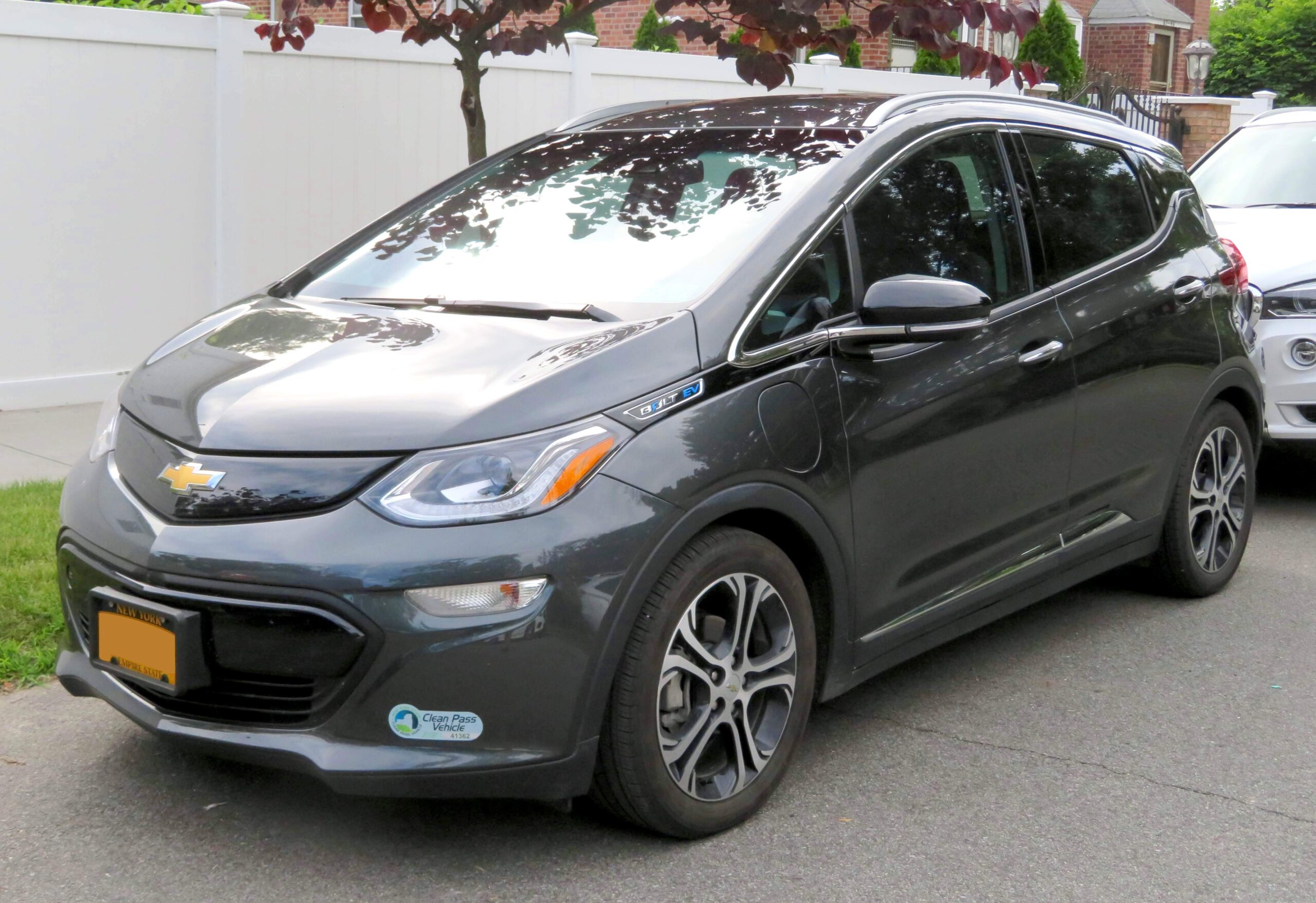
6. **Chevrolet Bolt EV**The Chevrolet Bolt EV has earned acclaim for its affordability and practical range, making it an accessible entry point for many first-time electric vehicle buyers. Despite these strengths, its digital ecosystem has consistently fallen short. The Bolt’s patch system is characterized by inconsistency and a lack of modern capabilities, primarily relying on infrequent, dealer-installed updates. This dated strategy has severely hampered Chevrolet’s ability to maintain the vehicle’s software competitiveness, especially as the rest of the EV market transitions to seamless over-the-air delivery.
A significant vulnerability in Chevrolet’s software management became evident during the widespread battery recall, which affected over a hundred thousand vehicles due to fire risks from defective cells. While a software patch was developed to monitor battery behavior and mitigate risks, its delivery process was highly fragmented. Many owners experienced delays due to manual installation requirements, had to make multiple visits to service centers, or received conflicting information from dealerships. The absence of a robust, unified OTA infrastructure amplified an already critical issue, highlighting Chevrolet’s unpreparedness on the software front.
Beyond crisis management, the routine update experience for the Bolt EV is equally underwhelming. The infotainment system, while functional at launch, quickly feels outdated, lacking the fluidity and modern features prevalent in rival platforms. Owners frequently cite issues with basic navigation, smartphone connectivity, and user interface responsiveness. Unfortunately, these deficiencies are rarely addressed effectively due to the inefficient software rollout process, with updates being irregular, vaguely documented, and difficult to access unless the vehicle is already in for unrelated service.
Chevrolet’s software limitations also extend to performance tuning. Features that could benefit from firmware enhancements, such as acceleration calibration, charging efficiency optimization at various stations, or the precise behavior of regenerative braking, have largely remained unchanged since the vehicle’s delivery. There is little sense that the Bolt evolves or improves post-purchase. This static nature is particularly frustrating in an industry where even mid-tier EVs now routinely promise performance gains and energy-saving tweaks via simple software downloads.
While General Motors is making significant investments in the Ultium platform, which promises a stronger OTA infrastructure for its future electric vehicles, the current Bolt EV remains tethered to legacy systems. Its present software strategy represents a missed opportunity for a vehicle that otherwise offers a practical and intelligent introduction to EV ownership. The Bolt demonstrates that while range and pricing are crucial, consistent software support is equally vital for a complete and forward-looking electric vehicle experience.
Car Model Information: 2025 Genesis GV80 3.5T
Name: Chevrolet Bolt EV
Caption: 2022 Chevrolet Bolt EV
Manufacturer: General Motors
Production: unbulleted list
ModelYears: unbulleted list
Class: Subcompact car
BodyStyle: hatchback
Layout: Front-engine, front-wheel-drive layout
Predecessor: Chevrolet Spark EV
Categories: 2020s cars, All Wikipedia articles in need of updating, All articles containing potentially dated statements, All articles with unsourced statements, Articles containing potentially dated statements from February 2018
Summary: The Chevrolet Bolt EV (marketed in Europe as Opel Ampera-e) is a battery electric subcompact hatchback manufactured and marketed by General Motors under its Chevrolet brand from late 2016 until late 2023, with a brief hiatus between mid-2021 and early 2022.
The first-generation Bolt was developed and manufactured with LG Corporation. Sales of the 2017 Bolt began in California in December 2016; it was released nationwide and international markets release in 2017. A rebadged European variant was marketed as the Opel Ampera-e in mainland Europe. In 2017, the Bolt was the second-best-selling plug-in car in the United States. It was named the 2017 Motor Trend Car of the Year, the 2017 North American Car of the Year, an Automobile magazine 2017 All Star, and was listed in Time magazine’s Best 25 Inventions of 2016. The Ampera-e was discontinued after 2018. By the end of 2020, GM had sold 112,000 Bolt and Ampera-e cars worldwide. The first-generation Bolt had been subject to at least three recalls due to battery fire risks.
In mid-2023, GM officials said they would discontinue the Bolt; after outcry, they announced plans for a next-generation model, which is expected to be revealed in 2025 for model year 2026.
Get more information about: Chevrolet Bolt
Buying a high-performing used car >>>
Brand: Chevrolet Model: Bolt EV
Price: $63,683 Mileage: 5,413 mi.
Read more about: Buyer Beware: 14 Cars Notorious for Breaking Down Prematurely, Especially After 100,000 Miles

7. **Jaguar I-PACE**The Jaguar I-PACE burst onto the EV scene with ambitious claims, promising a high-performance, luxury electric SUV capable of rivaling the best in its class. While its elegant design and impressive ride quality largely met these expectations, its software update system has consistently struggled to keep pace. Initially, Jaguar offered virtually no meaningful OTA support, with even basic navigation and interface corrections necessitating dealership visits. The company only began rolling out limited OTA functionality well after the vehicle’s initial launch, setting a precedent for a rocky and inconsistent software journey for early adopters.
Even after OTA capabilities were introduced, the deployment of updates has remained notably sluggish. Many I-PACE owners report extended intervals between patches and a persistent lack of clarity regarding the contents of each update. Disturbingly, some improvements have been negligible or have failed to function as anticipated, and in several instances, new updates have inadvertently introduced fresh bugs that required subsequent corrections. This uneven quality control has fostered caution among owners, with some opting to postpone installations out of concern for potential new issues—a level of uncertainty that is particularly detrimental to a luxury brand’s reputation.
A significant underlying issue for the I-PACE is its fragmented system architecture. Unlike pioneers such as Tesla or Rivian, Jaguar did not design its vehicle systems around a fully centralized digital platform. This architectural choice renders large-scale, comprehensive updates considerably more complex and inherently riskier. As a result, only specific vehicle domains, primarily infotainment and navigation, receive routine updates. More fundamental systems, including driver-assistance software, battery management, or powertrain behavior, often still require physical servicing for any modifications. This limitation severely diminishes the utility of the I-PACE’s OTA system, leaving it feeling incomplete rather than fully realized.
The in-vehicle user experience has also suffered directly from the slow update strategy. The infotainment interface has drawn criticism for its lag, outdated graphics, and underwhelming overall functionality. Features such as voice control and mobile integration often feel cumbersome, and there is little evidence that Jaguar has prioritized these long-standing complaints with targeted and effective software patches. For a vehicle positioned within the high-end luxury segment, this digital stagnation creates a stark disconnect between the brand’s premium image and the actual experience delivered to its owners.
Jaguar has publicly affirmed its commitment to enhancing OTA capabilities for future models, particularly as the company transitions towards an all-electric future. However, for existing I-PACE owners, these future promises offer little immediate relief. The inconsistent patch system and the perceptible lack of meaningful evolution over time have unfortunately left the vehicle behind in the rapidly advancing software race, turning what could have been a digital triumph into a frustrating counterweight to its otherwise impressive hardware potential.
Car Model Information: 2022 Jaguar I-PACE HSE EV400 AWD Automatic
Name: Jaguar I-Pace
Manufacturer: Jaguar Land Rover
Production: 2018–2024
Assembly: Magna Steyr
Designer: Ian Callum
Class: Compact crossover SUV#Luxury vehicles
BodyStyle: SUV
Layout: all-wheel-drive
Platform: Jaguar Land Rover car platforms#D7e
Motor: Permanent magnet synchronous motor
Abbr: on
Transmission: 1-speed direct-drive reduction
Battery: kW·h,Lithium-ion battery
ElectricRange: United States Environmental Protection Agency
Charging: 11kW AC (7.4kW “1-phase/32A only” AC 2018–2020),100 kW DC
Wheelbase: 2990 mm
Length: 4682 mm
Width: ubl
Height: 1565 mm
Weight: 2133 kg
Sp: uk
Categories: 2020s cars, All-wheel-drive vehicles, All Wikipedia articles written in British English, All accuracy disputes, All articles lacking reliable references
Summary: The Jaguar I-Pace (stylised as I-PACE) is a battery-electric crossover SUV produced by Jaguar Land Rover (JLR) under their Jaguar marque. The I-Pace was announced in March 2018, European deliveries began in June 2018 and North American deliveries started in October 2018. Amid slowing sales and a change in corporate vision, Jaguar has announced that the I-Pace will be discontinued by 2025.
Get more information about: Jaguar I-Pace
Buying a high-performing used car >>>
Brand: Jaguar Model: I-PACE
Price: $35,199 Mileage: 32,938 mi.
Read more about: Beyond 200,000 Miles: Unpacking the Incredible Longevity of 9 Electric Cars and Their Batteries

8. **Audi e-tron (Pre-Q8 Models)**The launch of the original Audi e-tron SUV was met with considerable anticipation, positioning it as one of the first premium electric vehicles from a well-established legacy brand. While the vehicle excelled in delivering Audi’s signature refinement, comfort, and a superb driving experience, it significantly underperformed in the crucial area of software support. Early e-tron models were not engineered with a robust OTA infrastructure in mind, meaning that the vast majority of updates required handling through dealership service. This made the ownership experience feel more akin to that of a traditional internal combustion engine vehicle than a cutting-edge electric car.
At the time, Audi’s software platform was simply not designed for real-time remote support. The infotainment system, despite its visually appealing interface, frequently struggled with sluggish performance and limited application integration. Owners commonly reported issues such as unreliable Bluetooth connectivity, slow system boot-up times, and occasional freezing. Unfortunately, fixes for these problems were neither rapid nor consistently reliable. In many instances, Audi failed to clearly communicate whether specific updates were even available, forcing owners to rely on word-of-mouth or actively inquire during scheduled service appointments.
The absence of seamless patching also negatively impacted the e-tron’s broader digital ecosystem. Audi’s connected services, including the myAudi app and the in-car voice assistant, were initially clunky and exhibited inconsistent performance. While firmware improvements could have addressed these issues more promptly, the fragmented and slow software deployment strategy prevented any significant impact. As a result, the early e-tron models felt like vehicles that were ahead of their time in terms of design and engineering but notably behind in their digital support capabilities.
A further consequence of the weak OTA system was the missed opportunity to enhance efficiency and battery management. While competing electric vehicles frequently leveraged software updates to improve real-world range or refine charging behavior, the e-tron remained largely static in these critical areas. Even minor potential improvements, such as recalibrating energy recovery systems or fine-tuning route-based charging, were not pursued with the urgency seen in other brands. This lack of ongoing optimization left the car susceptible to feeling outdated within just a few years of its release.
Audi has since made strides in developing a more modern OTA infrastructure for its newer EVs, particularly those under the Q8 e-tron badge and the advanced PPE architecture shared with Porsche. However, owners of the earlier e-tron models have effectively been left behind. For a brand renowned for its cutting-edge engineering, the evident lack of software agility in the initial e-tron lineup significantly undermined the otherwise impressive performance and craftsmanship inherent in the vehicle.
Car Model Information: 2022 Audi e-tron Premium Plus
Categories: All Wikipedia articles in need of updating, All pages needing cleanup, Articles needing cleanup from September 2025, Articles with short description, CS1 German-language sources (de)
Summary: The Audi e-tron is a series of electric and hybrid cars shown by Audi from 2009 onwards. In 2012 Audi unveiled a plug-in hybrid version, the A3 Sportback e-tron, released to retail customers in Europe in August 2014, and slated for the U.S. in 2015. A decade after the unveiling of the first e-tron concept at the 2009 International Motor Show Germany, Audi’s first fully electric e-tron SUV went into production in 2019.
The name has also been used on some racing cars.
Get more information about: Audi e-tron
Buying a high-performing used car >>>
Brand: Audi Model: e-tron
Price: $28,999 Mileage: 30,926 mi.
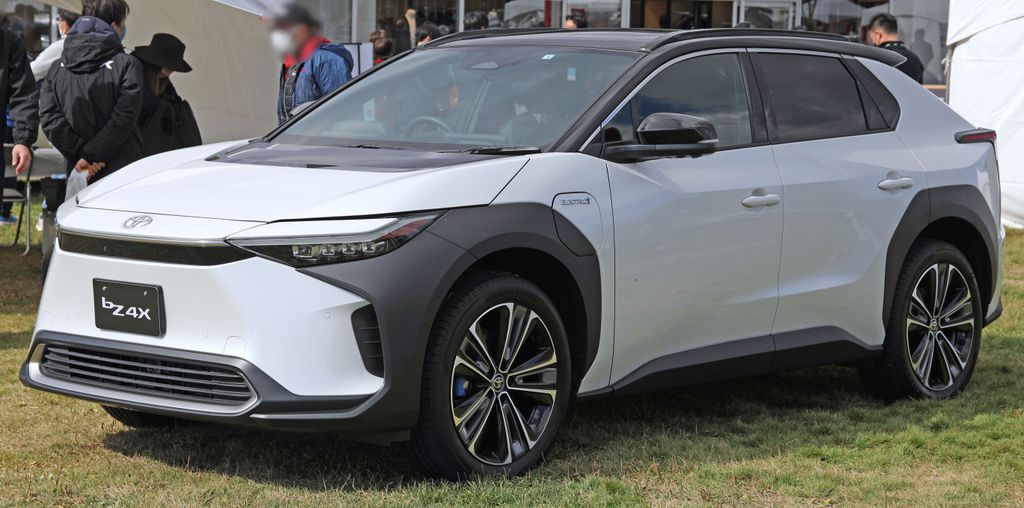
9. **Toyota bZ4X**Toyota’s long-anticipated foray into the mass-market all-electric segment with the bZ4X carried with it the high expectation of the brand’s world-class reliability and innovation. Yet, its software and patching system have demonstrably underperformed. Unlike competitors that invested in comprehensive, full-feature OTA platforms, the bZ4X launched with conspicuously limited update capabilities and an unclear roadmap for future expansion. Most essential software changes continue to necessitate dealership visits, and Toyota has provided minimal communication to owners about what updates are being rolled out and when. For customers anticipating a modern, connected vehicle experience, this outdated approach feels strikingly uncharacteristic of the Toyota brand.
The vehicle’s infotainment system stands out as a clear weak spot. It consistently lacks the polish, responsiveness, and intuitive design found in many competing systems, with noticeable delays in touch recognition and a limited range of customization options. While Toyota has issued some updates to address these specific problems, the mandatory dealership intervention for delivery severely limits their reach and overall effectiveness. Many owners, burdened by the inconvenience, simply never receive these fixes unless they proactively schedule service appointments. This reactive model places the onus heavily on the customer, directly contradicting current best practices for software-defined vehicles.
Moreover, Toyota has adopted a conservative stance regarding feature deployment through software. Key elements such as adjustable regenerative braking levels, EV mode customization, and the overall intelligence of the navigation system have seen minimal improvement since the vehicle’s launch. These are precisely the types of features that rival brands routinely adjust and enhance through OTA, thereby providing drivers with a continuous sense that their vehicle is evolving and improving. With the bZ4X, the general sentiment is that what you buy is largely what you keep, with little discernible growth over time through software enhancements.
Toyota’s communication strategy surrounding updates has also been a significant contributor to owner frustration. There is no centralized platform or a reliable app notification system that consistently informs users about the availability of new software. Patch notes are notoriously difficult to locate, and customer support often struggles to provide specific, detailed answers about digital features. For a company celebrated for its mechanical engineering excellence, this digital silence is jarring and feels misaligned with the contemporary expectations of modern EV ownership.
While Toyota may be planning more extensive OTA capabilities for its future electric vehicle offerings, the bZ4X currently serves as a cautionary tale about underestimating the critical role of software in the EV ecosystem. Without robust patching systems and a clear digital strategy, even the most mechanically dependable automaker risks falling significantly behind. The bZ4X may be a structurally sound vehicle, but its lackluster software support leaves it trailing in a competitive race increasingly defined by connectivity and digital agility.
Car Model Information: 2023 Toyota bZ4X Limited
Name: Toyota bZ4X
Caption: 2023 Toyota bZ4X AWD Limited (US)
Manufacturer: Toyota
ModelCode: EA10
Aka: unbulleted list
Production: April 2022 – present
ModelYears: 2023–present (North America)
Assembly: unbulleted list
Designer: Yung Joo Presciutti, Ken Billes, Shinya Minagawa, Yuki Takamatsu, and Hiroyuki Tada
Class: Compact crossover SUV
BodyStyle: SUV
Layout: unbulleted list
Platform: e-TNGA
Related: unbulleted list
Motor: unbulleted list
Powerout: unbulleted list
Abbr: on
Transmission: BluE Nexus
Battery: unbulleted list
Range: unbulleted list
Charging: unbulleted list
Wheelbase: 2850 mm
Length: 4690 mm
Width: 1860 mm
Height: 1650 mm
Weight: convert
Predecessor: Toyota RAV4 EV
Sp: us
Categories: All-wheel-drive vehicles, All Wikipedia articles written in American English, All articles containing potentially dated statements, All articles with unsourced statements, Articles containing Japanese-language text
Summary: The Toyota bZ4X, marketed as simply the Toyota bZ in North America since 2025, is a battery electric compact crossover SUV manufactured by Toyota. A Subaru version is marketed as the Subaru Solterra.
The vehicle debuted in April 2021 as the “bZ4X Concept”. It is the first vehicle to be based on the e-TNGA platform co-developed by Toyota and Subaru, and the brand’s first model to be part of their Toyota bZ (“beyond Zero”) series of zero-emissions vehicles.
Worldwide sales of the bZ4X started out in mid-2022, with production planned in Japan and China. Sales in the United States also started in 2022. When first introduced, Toyota said it would be the first of seven “bZ” models to be launched globally by 2025; however, the company fell far short of that goal and began to move away from the bZ naming convention in 2025.
The model received a major refresh in 2025, initially for Europe and North America, with design updates and major mechanical improvements such as more efficient motors, improved cooling, and higher power output. For North America, the model was renamed to Toyota bZ. An extended length, station wagon-like version was also introduced as the bZ Woodland in North America, and as the bZ4X Touring in Europe. A Subaru version of the extended length version is marketed as the Subaru Trailseeker.
Get more information about: Toyota bZ4X
Buying a high-performing used car >>>
Brand: Toyota Model: bZ4X
Price: $24,909 Mileage: 35,667 mi.
Read more about: Smart Buys for Families: 13 Used Cars Under $15,000 That Mechanics Trust for Long-Term Reliability
The modern automotive landscape demands more than just advanced hardware and impressive range; it necessitates a dynamic, evolving software platform. The stark contrast between electric vehicles that embrace robust OTA update systems and those that rely on outdated patch mechanisms is becoming increasingly evident to consumers. Manufacturers who prioritize software as a foundational element of vehicle design deliver not just a car, but a continuously improving ecosystem. Conversely, those that treat software as an afterthought risk alienating owners with static, quickly dated experiences. The real question for today’s discerning buyer is not just what a vehicle offers at purchase, but whether it is engineered to be smarter, safer, and more capable a year from now. This digital agility is no longer a luxury; it is a fundamental requirement for remaining competitive and delivering long-term value in the rapidly accelerating world of electric mobility.



